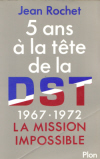le Glossaire de Francis a trouvé :
SA - Sturmabteilung - Allemagne nazie |
| - | Section d'assaut. Les SA constituaient les troupes de choc du NSDAP (parti nazi)formées en 1921 par Ernst Röhmer. Les SA jouent un rôle essentiel dans le putsch de la Brasserie en novembre 1923 ainsi que dans les combats de rue pour la prise du pouvoir par Hitler. Peu après la Nuit des longs couteaux, en 1934, Hitler se débarasse des principaux chefs SA devenus dangereux pour lui.
|
| - | Pour les distraits!
SA signifie également "Société Anonyme"... des fois où!
|
SD - Sicherheitsdienst - Allemagne nazie |
| - | Service de sécurité responsable de la surveillance intérieure, du renseignement, de l'espionnage et du contre-espionnage du parti.
Dans l'organigramme du RSHA (Office Central de la Sécurité du Reich) le SD est désigné:
- Amt III Inland SD (service de renseignement intérieur)
- Amt VI Ausland SD (service de renseignement à l'étranger)
|
SS - Schutzstaffel - Allemagne nazie |
| - | "Echelon de protection" ou "Section de protection".
Créée en 1923, la SS est d'abord la garde prétorienne de Hitler. Sous l'impulsion de Heinrich Himmler qui en prend la tête le 6 juin 1929, elle devient la police du Reich. A partir de 1937, la SS est chargée de la gestion du système concentrationnaire.
Himmler portera le titre de "Reichsfürher-SS".
A partir de 1935, la SS se subdivise en différentes branches notamment:
- SS Verfügungstruppe (troupes mises à disposition), organisées militairement et qui deviennent, au début de la guerre, les Waffen SS.
- SS Totenkopf (tête de mort) chargées de la garde des camps de concentration.
|
Dans ce texte : Criminal organization de Etienne Lorenceau le jeudi 25 décembre 2014 à 16h00 Criminal organization de Etienne Lorenceau le jeudi 25 décembre 2014 à 16h00
The London Charter, in Articles 9 and 10, had provided for charges to be brought against criminal organizations. By early autumn, prosecutors had decided to address the problem of institutional criminality, in the Army and elsewhere, by charging six allegedly criminal (and dissolved) organizations: the SS (including the SD), the Gestapo, the SA, the Reich Cabinet, the "Leadership Corps of the Nazi Party,"and the "General Staff and High Command" of the military. At first glance, it might seem that all but the last of these charges were made more for their historical and symbolic than their practical value; after all, the Nazi Cabinet and security and killing apparatus had collapsed with Germany's surrender, and the SA in particular had been reduced to insignificance since 1934. Moreover, some ofthe cases were openand-shut: it is difficult to imagine arguments being made for the innocence ofthe Gestapo [Arguments were made and evidence taken, however, for each of the accused organizations, and the fruits of this evidence are collected in the so-called Neave Report, 42 IMT 1, 1-153 (1949). Each ofthe organizations was defended by counsel].
Although it was self-evident that some of these groups had been legal "organizations" whose members had committed monstrous crimes, proving this high-stakes legal issue with respect to other accused organizations remained difficult. Resolution of this issue, however, went to the heart of the future Allied occupation. According to the London Charter and Control Council Law No. 10 (the relevant decree ofthe Big Four occupation authorities), [Allied Control Council Law No. 10, art. II, 2(e)-(f) (Dec. 20, 1945), reprinted in 15 Trials of War Criminals 23, 24-25 (1949) Control Council Law No. 10] upon a finding of organizational guilt, persons shown to have been members of the organization were liable and punishable without proof of what the individuals had done in furtherance of the organization, or indeed without allegation that they had done anything at all. In other words, the charges against the Nazi organizations were like the conspiracy charges, and both were viewed as critical by Allied planners, notably Jackson [See Stanislaw Pomorski, Conspiracy and Criminal Organization, in The Nuremberg Trial and International Law]
Organizational liability was intended to be a principal means for the Allies to proceed against the potential millions of persons whose individual acts, in a foreign country in wartime, the Allies could never hope to prove, but whose membership in, say, the Gestapo could be easily proven from official documents. *** / *** |



 Temps entre début et fin du script : 0.06 s 3 requêtes
Temps entre début et fin du script : 0.06 s 3 requêtes